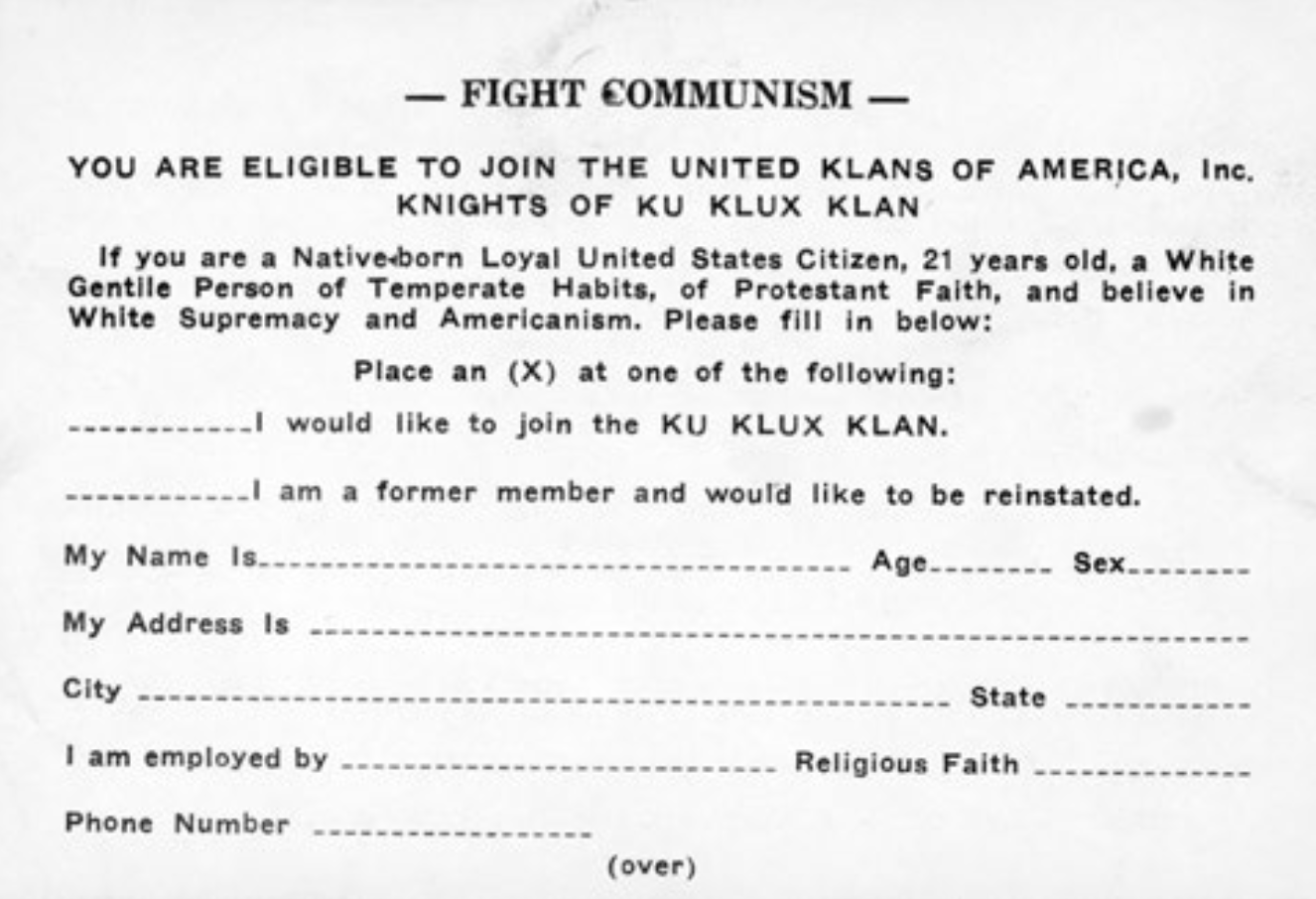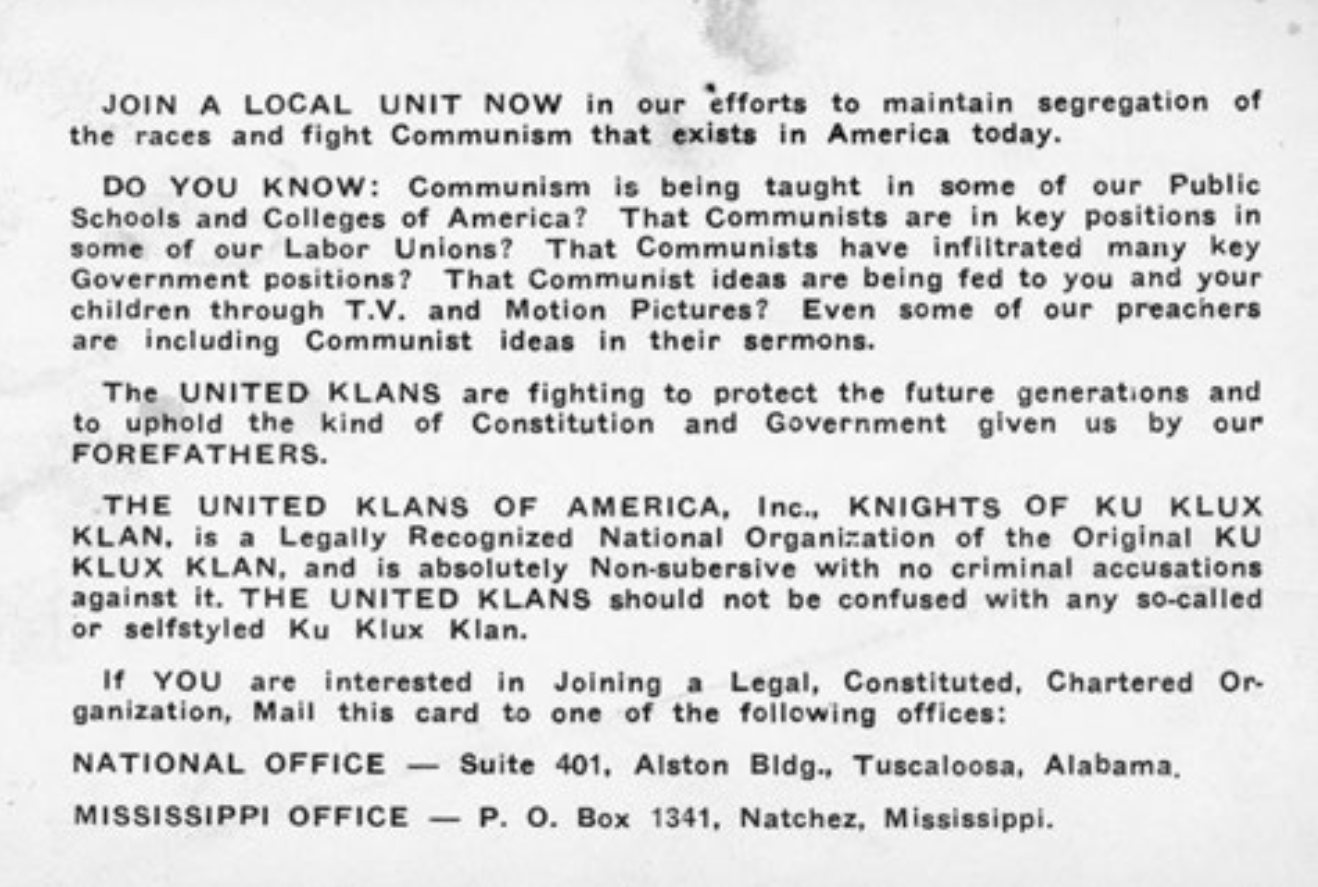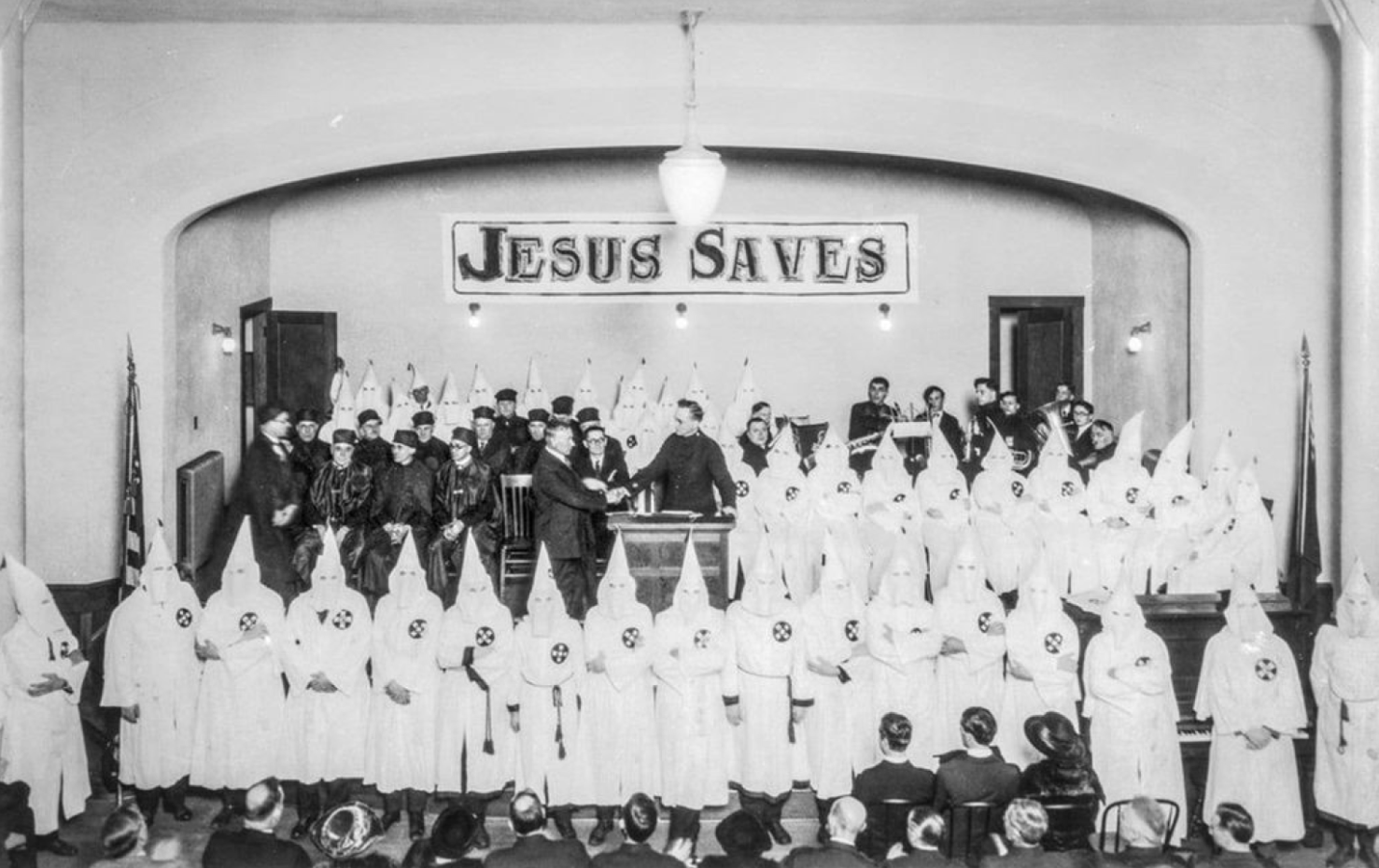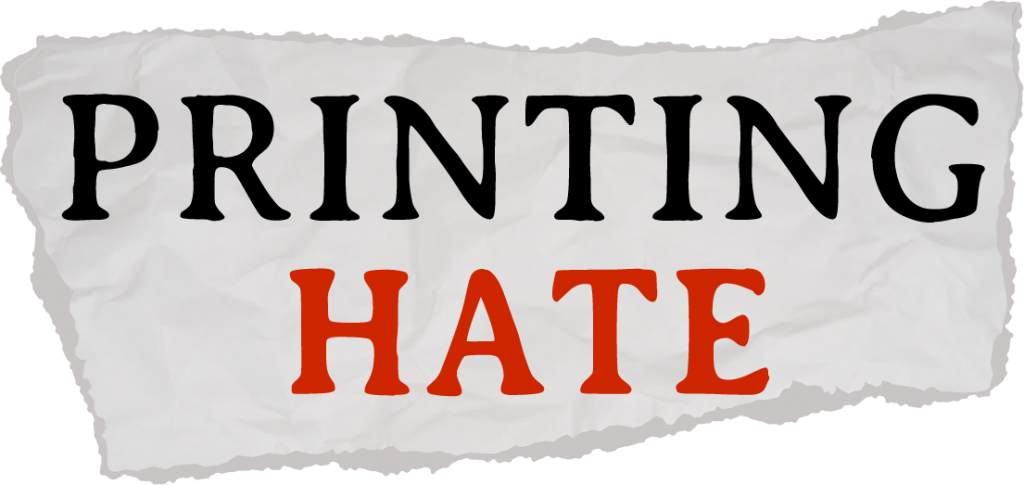By Anuoluwapo Adefiwitan
The revival of the Ku Klux Klan began in November 1915 with a cross burning atop Stone Mountain, Georgia, led by Methodist preacher William Joseph Simmons, who functioned as the klan’s Imperial Wizard.
This second iteration, inspired by D.W. Griffith’s racist film “The Birth of a Nation,’’ recruited white Protestant men. The klan’s membership grew quickly within the next decade and by 1921 had a chapter in every state of the Union.
This work is a collaboration of the Howard Center for Investigative Journalism and Capital News Service at the University of Maryland, Morgan State University, Hampton University, Howard University, Morehouse College, North Carolina Agricultural & Technical State University and the University of Arkansas.
By August 1921, Delaware had five active chapters of the KKK in five towns, according to The Evening Journal of Wilmington, Delaware. The paper published the klan’s “objects and purposes,” stating that the organization’s goal was “to shield the sanctity of the home and the chastity of womanhood; to maintain white supremacy; to teach and faithfully inculcate a high spiritual philosophy through an exalted ritualism, and by a practical devotedness to conserve, protect and maintain the … principles and ideals of a pure Americanism.”

“Prerequisites to citizenship in the Invisible Empire as set forth in the literature of the Klan are: only native-born American citizens who believe in the tenets of the Christian religion,” The Evening Journal reported.
The Southern Poverty Law Center explained that “many white supremacists have embraced religious concepts and scripture borrowed from the Old and New Testaments of the Bible. This is particularly applicable to Ku Klux Klan (KKK) members. …’’
PRINTING HATE
EXPLORE ALL STORIES
The klan burned crosses to symbolize “sending out the light of Christ to the world,” according to the law center.
The organization added that “white supremacists interpret scriptures and spiritual parables through the lens of racial discrimination and hate. In this way, they can justify their beliefs (which are vile and deplorable) as good, moral, and responsible.”


Media historian Jason Guthrie, an assistant professor of communication and media studies at Clayton State University in Georgia, said while this didn’t happen everywhere, “a lot of the meetings with the Ku Klux Klan would actually take place in various white churches.’’
In 1924, a klan church was founded in Havre de Grace, Maryland, near Delaware. The News Journal of Wilmington, Delaware, published a story that said, “The new building, with an electric ‘fiery cross’ on its steeple, is called the Webster Community Christian Church. … Klansmen guarded the church all week.”

This relationship between preachers and the KKK could be seen at the Holly Oak Methodist Episcopal Church in Delaware. During a service in 1922, Holly Oak’s pastor “praised the principles of law observance as advocated in the creed of the Ku Klux Klan.”
The magazine Christian Century wrote on the relationship between many Protestant preachers and the KKK in the regions where they were active. In its March 9, 1922, issue it said, “In regions where the Ku Klux Klan is still active, intimations multiply that certain Protestant ministers are in its confidence, and would seem on occasions to be directing its activities. …”
The magazine said KKK-compliant pastors have “some purpose, not consonant with the aims and ends of the gospel of Christ.”

